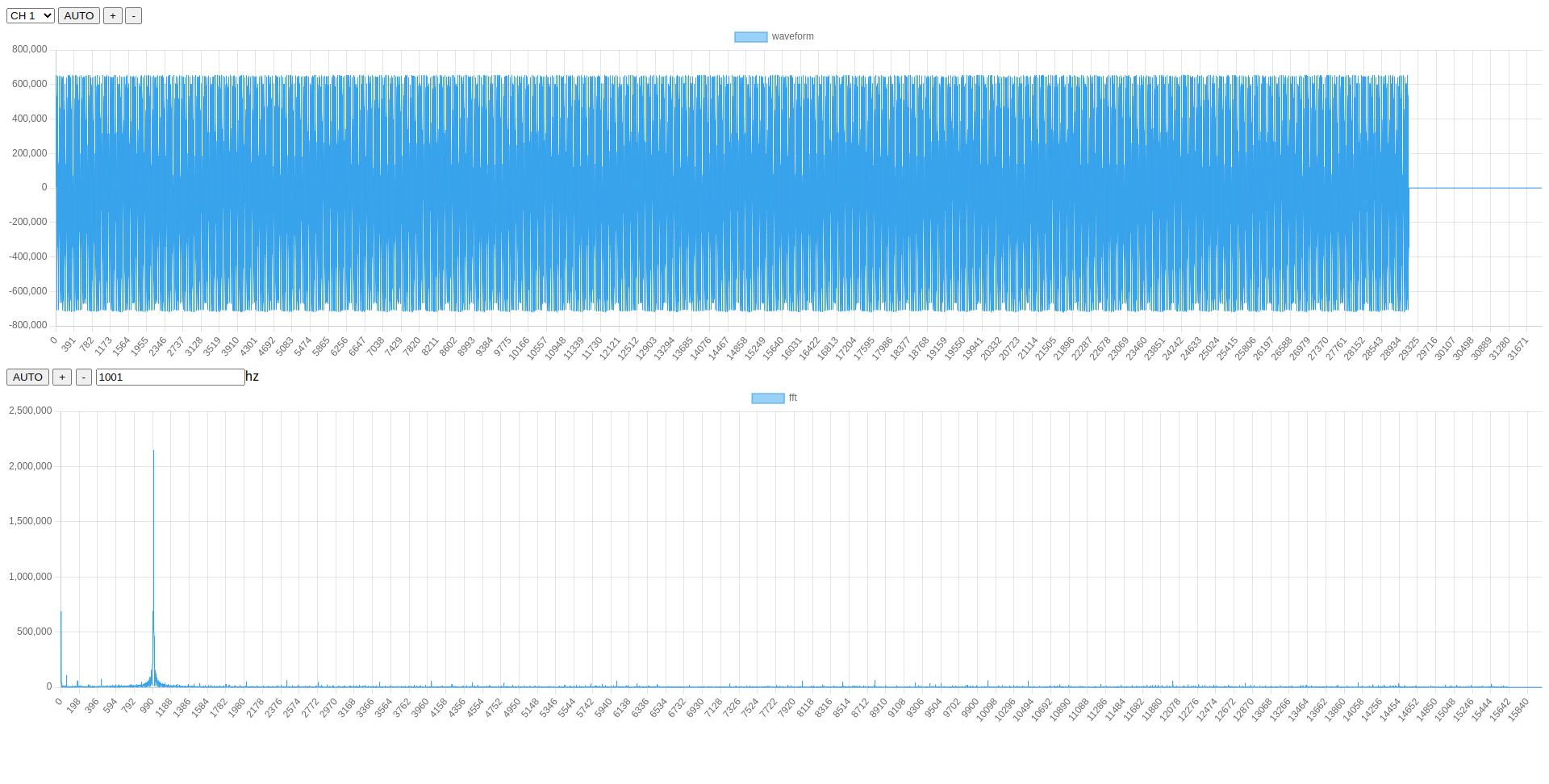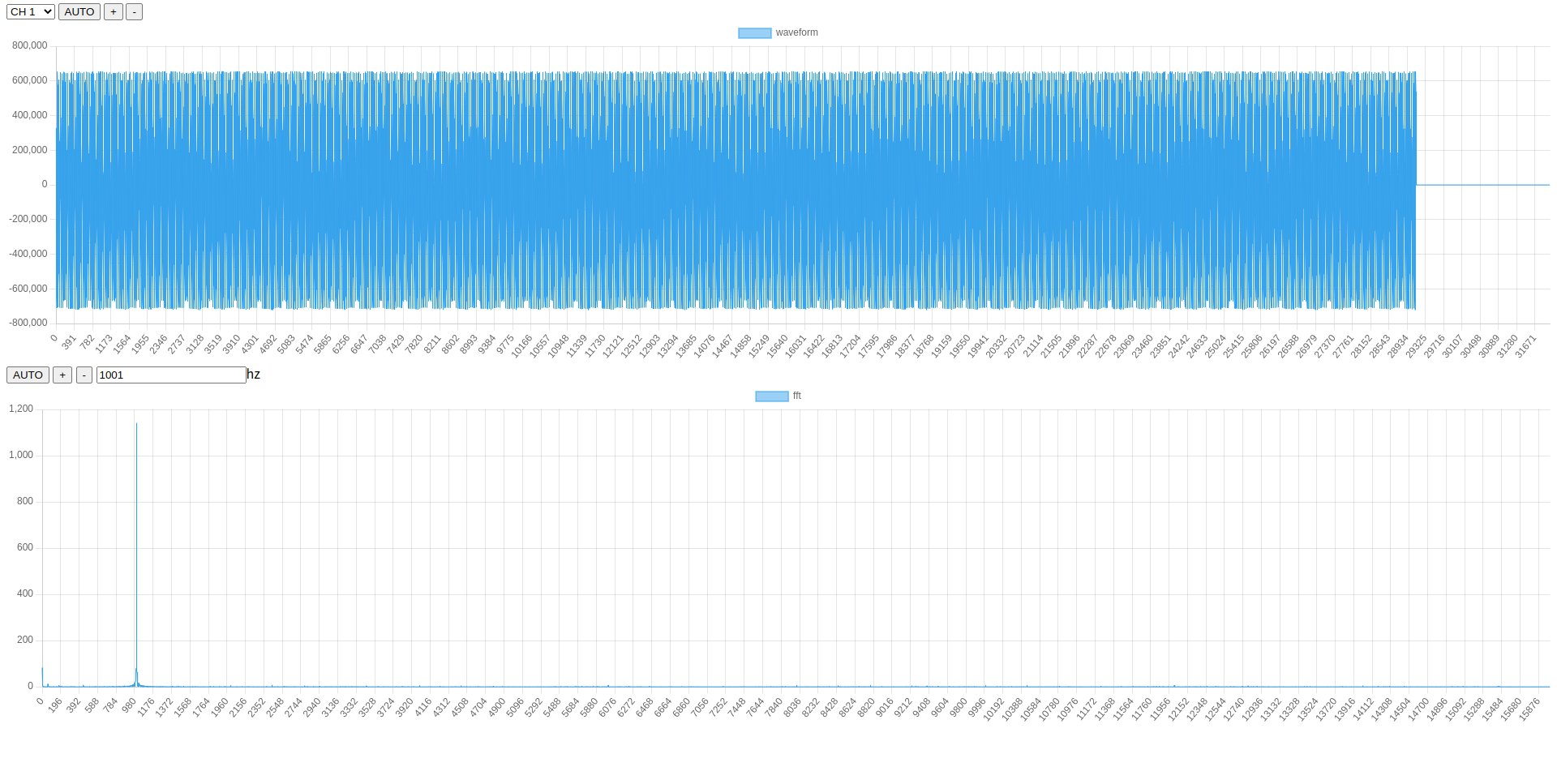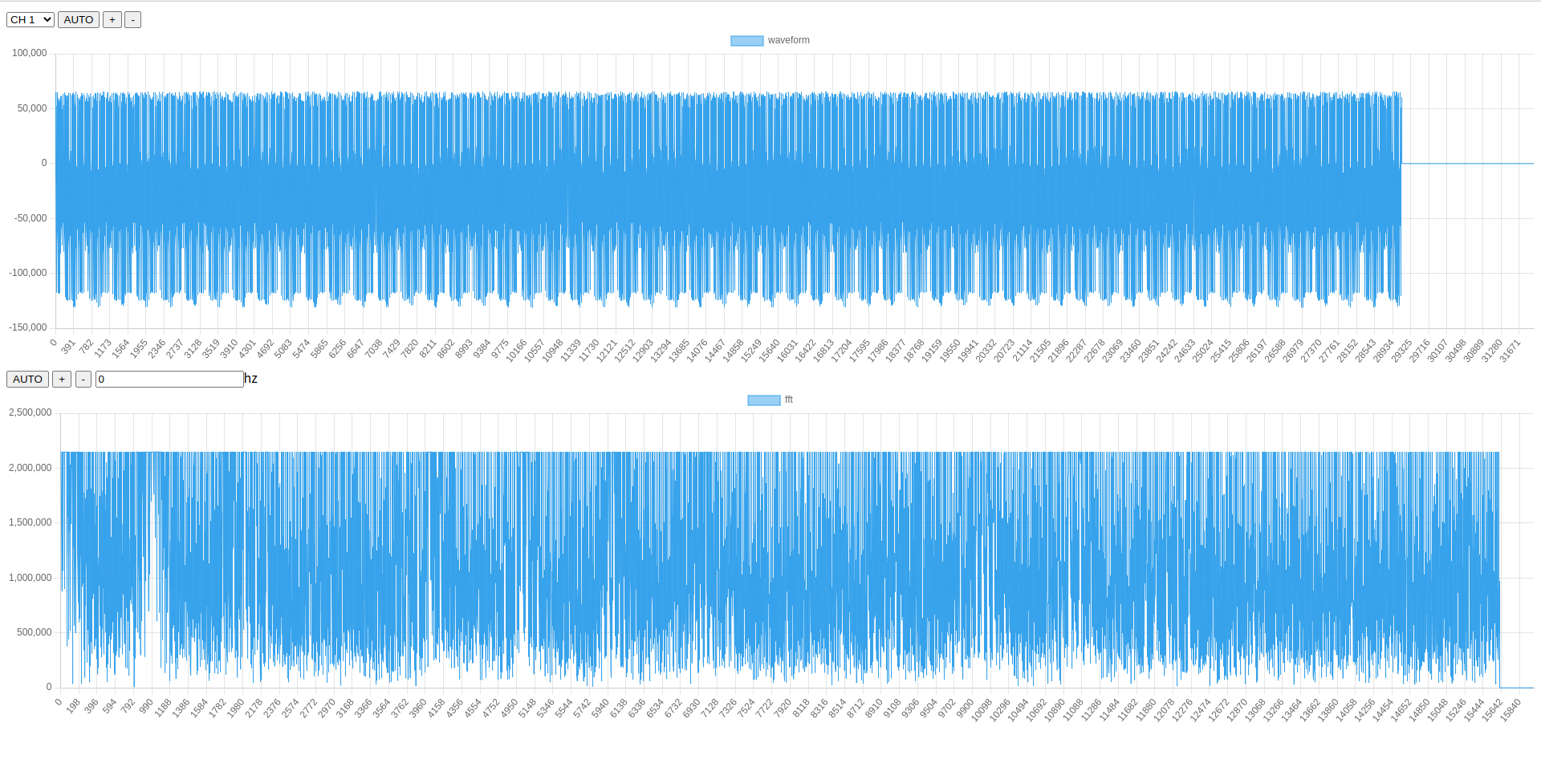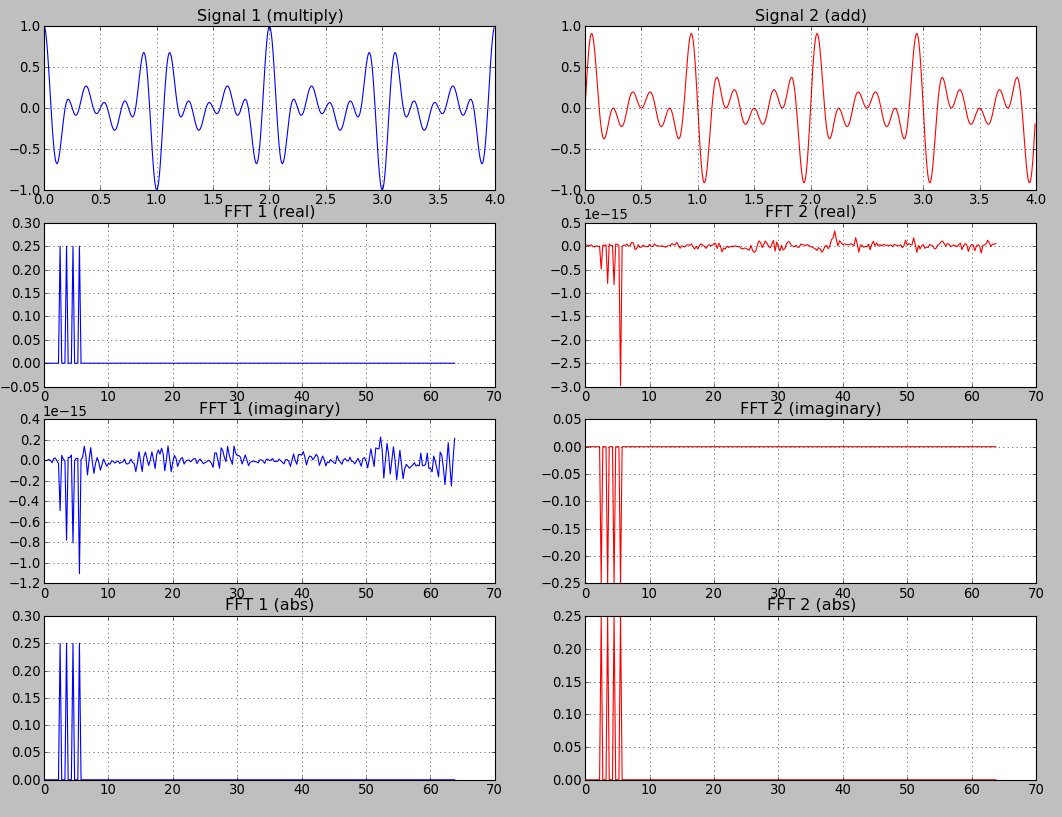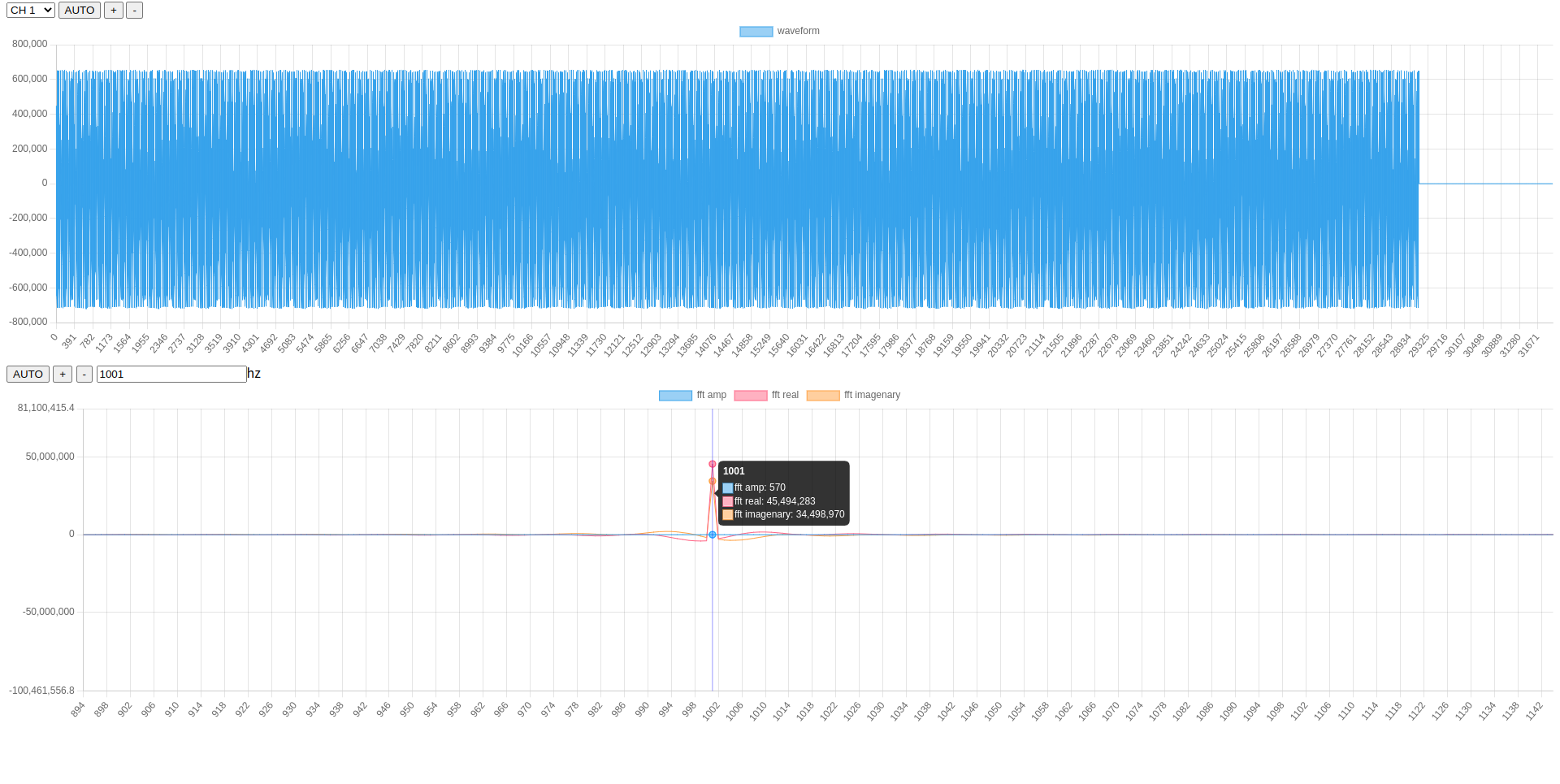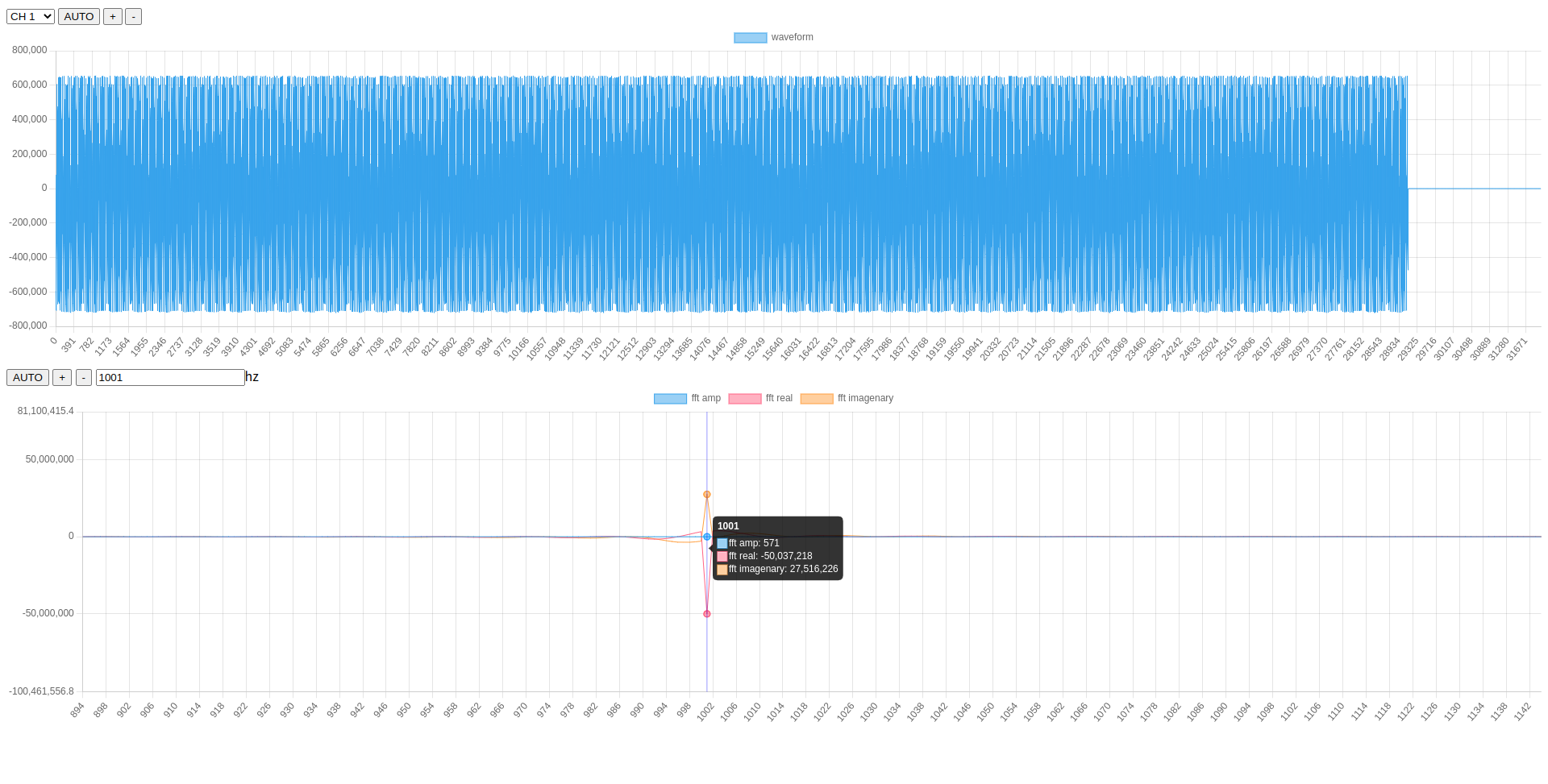Output FFT Coefficients:
0, 52.306340, 0.000000, 52.306340, 0.000000, 0.000000, 0.000000
1, 0.000000, 0.000000, 0.000000, 0.000000, 0.000000, -nan
2, 0.000000, 0.000000, 0.000000, 0.000000, 0.000000, -nan
3, 0.000000, 0.000000, 0.000000, 0.000000, 0.000000, -nan
4, -6.856612, -0.000001, 6.856612, -3.141593, -179.999990, 0.000005
5, 0.000000, 0.000000, 0.000000, 0.000000, 0.000000, -nan
6, 0.000000, 0.000000, 0.000000, 0.000000, 0.000000, -nan
7, 0.000000, 0.000000, 0.000000, 0.000000, 0.000000, -nan
8, -1.425690, -0.000000, 1.425690, -3.141592, -179.999986, 0.000009
9, 0.000000, 0.000000, 0.000000, 0.000000, 0.000000, -nan
10, 0.000000, 0.000000, 0.000000, 0.000000, 0.000000, -nan
11, 0.000000, 0.000000, 0.000000, 0.000000, 0.000000, -nan
12, -0.652365, -0.000000, 0.652365, -3.141592, -179.999983, 0.000012
13, 0.000000, 0.000000, 0.000000, 0.000000, 0.000000, -nan
14, 0.000000, 0.000000, 0.000000, 0.000000, 0.000000, -nan
15, 0.000000, 0.000000, 0.000000, 0.000000, 0.000000, -nan
16, -0.397825, -0.000000, 0.397825, -3.141592, -179.999982, 0.000013
17, 0.000000, -0.000000, 0.000000, -0.000000, -0.000000, -nan
18, 0.000000, -0.000000, 0.000000, -0.000000, -0.000000, -nan
19, 0.000000, -0.000000, 0.000000, -0.000000, -0.000000, -nan
20, -0.286168, -0.000000, 0.286168, -3.141592, -179.999983, 0.000012
21, 0.000000, -0.000000, 0.000000, -0.000000, -0.000000, -nan
22, 0.000000, -0.000000, 0.000000, -0.000000, -0.000000, -nan
23, 0.000000, -0.000000, 0.000000, -0.000000, -0.000000, -nan
24, -0.231164, -0.000000, 0.231164, -3.141592, -179.999986, 0.000009
25, 0.000000, -0.000000, 0.000000, -0.000000, -0.000000, -nan
26, 0.000000, -0.000000, 0.000000, -0.000000, -0.000000, -nan
27, 0.000000, -0.000000, 0.000000, -0.000000, -0.000000, -nan
28, -0.204855, -0.000000, 0.204855, -3.141593, -179.999990, 0.000005
29, 0.000000, -0.000000, 0.000000, -0.000000, -0.000000, -nan
30, 0.000000, -0.000000, 0.000000, -0.000000, -0.000000, -nan
31, 0.000000, -0.000000, 0.000000, -0.000000, -0.000000, -nan
32, -0.196983, 0.000000, 0.196983, 3.141593, 179.999995, -0.000000 |









